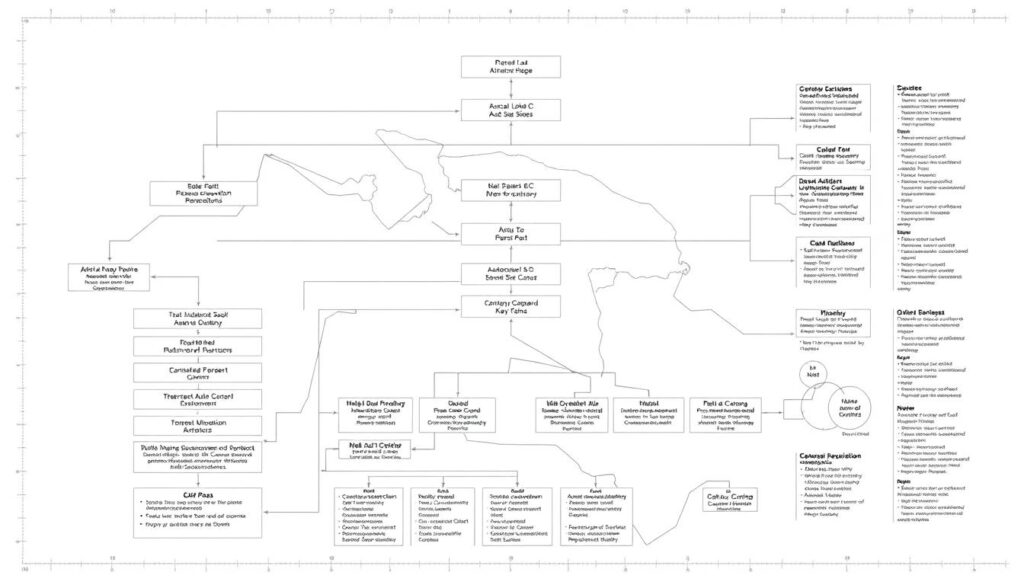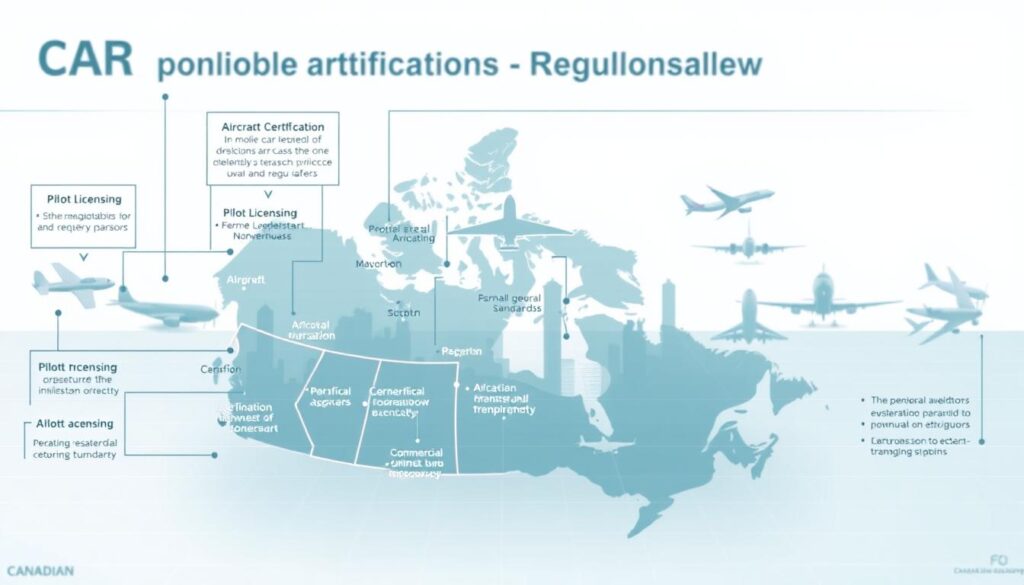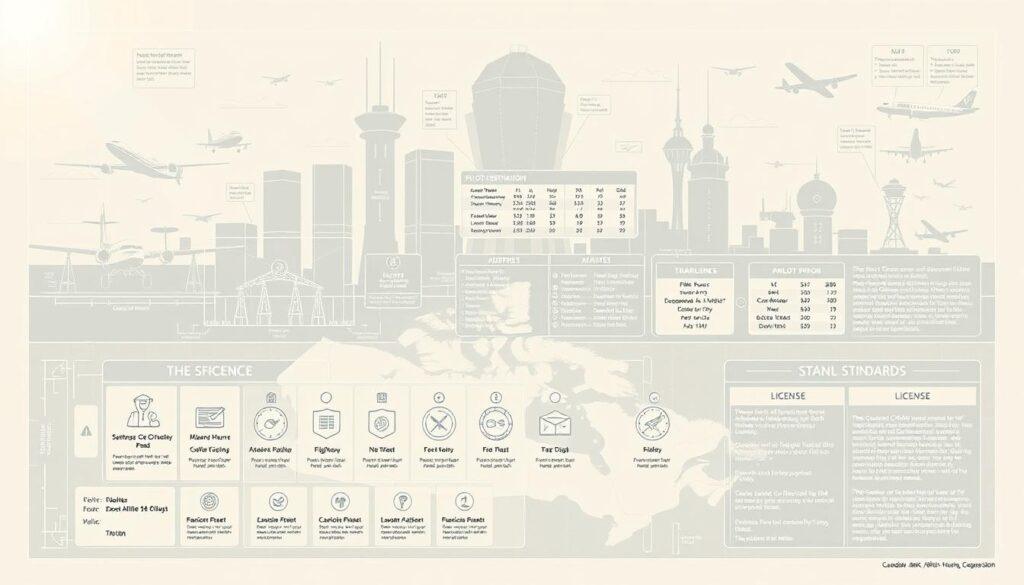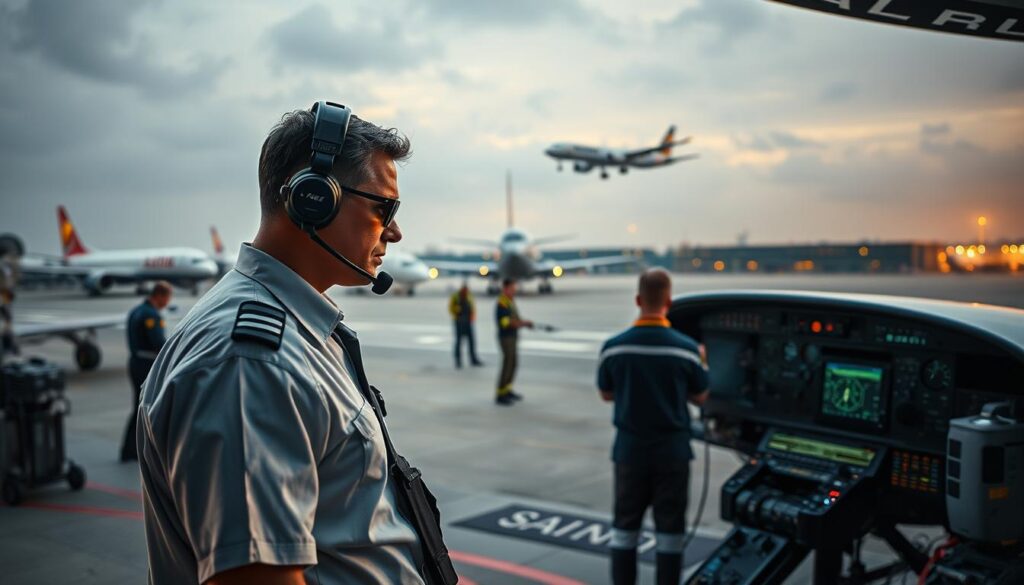Table of Contents
Have you ever wondered how the Canadian Aviation Regulations (CARs) shape the safety and efficiency of air travel? Established under the Aeronautics Act and administered by Transport Canada, these regulations form the backbone of aviation law in Canada, ensuring safety and standardization across the industry.
This guide is designed to provide pilots and aviation professionals with a comprehensive understanding of the CARs. Enacted on October 10, 1996, the CARs replaced former Air Regulations, creating a structured system that balances technical detail with approachable legal insights. The regulations cover a wide range of topics, including licensing, training, operational guidelines, and more.
The role of Transport Canada cannot be overstated. As the governing body, it ensures that all aspects of aviation operate within a framework that prioritizes safety and compliance. The Aeronautics Act grants Transport Canada the authority to enforce these regulations, making it a pivotal player in maintaining aviation standards.
Compliance with the CARs is not just a legal requirement; it is essential for maintaining aviation safety. Whether you are a seasoned pilot or an aspiring aviation professional, understanding these regulations is crucial. This guide will walk you through the history, structure, and key components of the CARs, as well as the processes for amendments and updates.
Stay tuned as we delve into the specifics of licensing, training programs, and operational guidelines. The CARs are more than just rules—they are the foundation of a safe and efficient aviation system.
For more information on the Canadian Aviation Regulations, visit Transport Canada’s official website.
Understanding the Canadian Aviation Regulations Framework
The Canadian Aviation Regulations (CARs) provide a structured framework that ensures safety and efficiency in aviation. At the heart of this framework are key terms that every pilot and aviation professional must understand. Terms like airworthiness, licensing, and registration form the foundation of compliance and operational standards.
Key Terms and Definitions
Airworthiness refers to an aircraft’s fitness for flight, meeting safety standards. Licensing ensures pilots and professionals meet required competencies. Registration involves listing aircraft with Transport Canada, ensuring legal operation.
The Role of the Aeronautics Act
The Aeronautics Act is the legislative backbone of the CARs, granting Transport Canada authority to enforce regulations. This act ensures that all aviation activities align with safety and legal standards, protecting both operators and passengers.
Understanding these terms and the Aeronautics Act is crucial for legal compliance and safe operations. By mastering these definitions, aviation professionals can navigate the regulatory landscape with confidence.
History and Establishment of the CARs
In 1996, a significant milestone in aviation history was marked with the establishment of the Canadian Aviation Regulations (CARs). This comprehensive overhaul was driven by the need to modernize and streamline aviation law in Canada, ensuring a safer and more efficient system for all stakeholders. The CARs replaced the former Air Regulations, addressing the complexities and inefficiencies of the previous framework.
Transition from Former Air Regulations
The transition to the CARs was a response to the outdated and complex nature of the earlier regulations. The former system was criticized for being difficult to understand and lacking a logical structure, which hindered compliance and safety. The new regulations introduced a clear, organized framework that prioritized safety and clarity, making it easier for professionals to adhere to the standards.
The Role of Transport Canada
Transport Canada played a pivotal role in the formulation and enforcement of the CARs. The department spearheaded the effort to create a modern regulatory framework that aligned with international standards while addressing the unique needs of Canadian aviation. This involved extensive consultation and a commitment to ensuring that the regulations were both effective and practical.

The establishment of the CARs marked a significant improvement in aviation safety and compliance. By streamlining the regulatory process and ensuring that all aspects of aviation operations were addressed, the CARs set a new standard for the industry. This historical change has had lasting implications, shaping the safety and efficiency of flight operations in Canada for decades to come.
Structure and Organization of the CARs
The CARs are systematically divided into ten distinct parts, each addressing specific facets of aviation. This clear division ensures that every aspect of aviation operations is covered comprehensively.
Division into Ten Functional Parts
From general provisions to air navigation services, each part of the CARs is designed to address specific issues such as airworthiness, personnel licensing, and flight operations. This structure facilitates easier application and understanding, making compliance more manageable for professionals.
Regulations, Standards, and Advisory Material
The regulatory framework includes mandatory regulations and non-binding advisory materials. Advisory circulars provide guidance without being enforceable. For example, Part I covers general provisions, while Part X focuses on greenhouse gas emissions under CORSIA.
The separation into parts allows for a logical progression of topics, creating a coherent legal framework. This organization is crucial for complying with legal and operational standards, ensuring safety and efficiency in aviation.

Understanding this structure is essential for professionals seeking to navigate the regulatory landscape with confidence. For more information on legal services related to aviation regulations, visit employment law experts in Winnipeg, Manitoba.
Key Components and Provisions Within the CARs
The CARs are structured into ten distinct parts, each addressing specific aspects of aviation operations. These parts range from general provisions to technical standards, ensuring comprehensive coverage of all regulatory needs.
- Part I covers general provisions, including key definitions and applicability.
- Part V focuses on airworthiness, detailing requirements for aircraft maintenance and certification.
- Part VI outlines operational guidelines for flight operations, including safety protocols and crew requirements.
These regulations are supported by various documents, such as advisory circulars and maintenance control manuals, which provide guidance on compliance. The interplay between statutory regulations and operational standards ensures that all aviation activities are conducted safely and efficiently.

Compliance with these provisions is essential for legal and operational integrity. By understanding and adhering to these components, aviation professionals can navigate the regulatory landscape effectively, ensuring both safety and efficiency in their operations.
Legal Guidelines for Pilots and Aviation Professionals
Understanding the legal guidelines within the Canadian Aviation Regulations (CARs) is essential for all aviation professionals. These guidelines ensure that pilots and personnel adhere to strict standards, maintaining safety and operational efficiency.
Compliance Requirements
Compliance with the CARs is not just a legal obligation but a cornerstone of safe aviation practices. The regulations outline specific requirements for airworthiness, personnel licensing, and registration of aircraft. For instance, all aircraft must meet stringent airworthiness standards to be deemed fit for flight.
| Requirement | Description | Importance |
|---|---|---|
| Airworthiness Certification | Ensures aircraft meet safety standards | Critical for flight safety |
| Personnel Licensing | Ensures pilots meet competency requirements | Essential for operational safety |
| Aircraft Registration | Legal operation of aircraft | Ensures legal compliance |
Non-compliance can lead to severe consequences, including fines and operational restrictions. Therefore, maintaining proper documentation and adhering to all legal standards is crucial for aviation professionals.

Regulatory Update and Amendment Process
The process of updating and amending the CARs is designed to ensure that the regulations remain relevant and effective in addressing the evolving needs of the aviation industry. This process is led by the Canadian Aviation Regulation Advisory Council (CARAC), which facilitates public consultation to gather input from stakeholders.
Consultation Through CARAC
CARAC plays a crucial role in the consultation process by bringing together representatives from various sectors of the industry. This collaborative approach ensures that all perspectives are considered before any changes are made to the regulations. The council’s involvement helps maintain a balance between safety, efficiency, and practicality.
| Step | Description |
|---|---|
| 1. Identification of Need | Industry stakeholders or Transport Canada identify areas needing updates. |
| 2. Drafting Proposals | Proposed changes are drafted based on identified needs. |
| 3. Public Consultation | Stakeholders review and provide feedback through CARAC. |
| 4. Review and Revision | Feedback is analyzed, and proposals are refined. |
| 5. Final Approval | Approved amendments are published in the Canada Gazette. |
| 6. Implementation | Updates are integrated into the regulatory framework. |
Recent updates, such as amendments to training programs and safety standards, demonstrate how this process enhances aviation safety. These changes are carefully integrated into the legal framework to ensure seamless adoption. For example, updates to airworthiness standards have improved safety outcomes, showing the effectiveness of this approach.
Transparency and consultation are vital in this process. They foster trust and collaboration among stakeholders, leading to continuous improvement in aviation safety and operational efficiency. By engaging with the industry, the regulatory framework remains dynamic and responsive to new challenges.
Insights into Licensing and Training Standards
Licensing and training form the cornerstone of ensuring safety and efficiency in aviation operations. The Canadian Aviation Regulations (CARs) outline detailed requirements for both pilots and maintenance engineers, creating a robust framework for operational excellence.
Pilot Licences and Examinations
Obtaining a pilot licence involves a comprehensive process that includes standardized examinations and practical flight tests. These exams assess a pilot’s knowledge of aviation rules, weather interpretation, and navigation skills. Licences must be renewed periodically to ensure ongoing competency.
Training programs for pilots are equally rigorous, covering both theoretical and practical aspects. From ground school to flight simulations, these programs ensure that pilots are well-prepared for real-world scenarios. The emphasis on recurrent training underscores the commitment to safety and efficiency in the skies.
Aircraft Maintenance Engineer Qualifications
Becoming a certified Aircraft Maintenance Engineer (AME) requires specific qualifications, including formal education and hands-on experience. The certification process involves examinations that test technical knowledge and problem-solving abilities. AMEs must also complete regular updates to stay current with industry advancements.
The training for AMEs is designed to ensure a deep understanding of aircraft systems and maintenance protocols. By combining classroom instruction with practical training, these programs produce professionals capable of performing precise and safe maintenance work. This dual focus on knowledge and skill ensures that aircraft are airworthy and ready for operation.

For more information on licensing and training standards, visit legal experts who specialize in aviation regulations.
Examining Airworthiness and Maintenance Standards
Airworthiness refers to an aircraft’s fitness for safe flight, ensuring compliance with strict safety standards. Under the CARs, airworthiness is non-negotiable, forming the cornerstone of secure flight operations. Maintenance standards are equally critical, detailing rigorous inspection procedures and mandatory checks to uphold safety norms.
Operators and maintenance engineers play pivotal roles in maintaining airworthiness. They must adhere to design standards and airworthiness directives, ensuring aircraft are always flight-ready. Regular maintenance inspections significantly enhance passenger safety, as highlighted by Transport Canada guidelines.
| Requirement | Description | Importance |
|---|---|---|
| Airworthiness Certification | Ensures aircraft meet safety standards | Critical for flight safety |
| Periodic Inspections | Regular checks to maintain aircraft condition | Essential for ongoing safety |
| Mandatory Maintenance Checks | Comprehensive reviews before flight | Ensures compliance and safety |
Compliance with these requirements is essential for safe operations, safeguarding both passengers and crew. By adhering to these standards, the aviation industry maintains its commitment to safety and efficiency.

Overview of General Operating and Flight Rules
The Canadian Aviation Regulations (CARs) outline detailed procedures and requirements for pre-flight planning, flight preparation, and aircraft operation to ensure overall safety. These rules are designed to maintain a high standard of safety and efficiency in aviation operations.
Pre-Flight and Flight Preparation
Before takeoff, pilots must follow a series of critical steps. This includes thorough flight planning, equipment checks, and safety briefings. The CARs emphasize the importance of these pre-flight procedures to minimize risks and ensure compliance with safety standards.
During flight, the regulations prescribe specific measures to maintain safety. These include adherence to air traffic control instructions and effective communication with other aircraft. The role of air traffic control is crucial in managing flight paths and ensuring safe distances between aircraft.
- Pre-Flight Checks: Pilots must conduct detailed equipment inspections and review flight plans.
- Flight Preparation: This includes obtaining necessary clearances and ensuring all safety protocols are met.
- In-Flight Safety: Continuous monitoring of aircraft systems and adherence to air traffic control guidelines are essential.
Advisory circulars provide practical examples of how these regulations are applied. For instance, they outline the specific documentation required for pre-flight operations and the procedures for handling emergencies. These resources help pilots understand and implement the regulations effectively.
Transport Canada and industry experts recommend maintaining detailed records of all pre-flight and in-flight procedures. This documentation is vital for audits and ensuring ongoing compliance with safety standards.

For more information on legal services related to aviation regulations, visit legal experts who specialize in aviation matters.
Understanding Commercial Air Services and Operations
Commercial air services operate under a strict regulatory framework designed to ensure safety and efficiency. This framework, outlined in Part VII of the regulations, covers certification, operational standards, and crew management practices. The certification process for airlines and air operators is rigorous, involving detailed inspections and audits to ensure compliance with safety and operational standards.
Operational rules focus on crew management and on-board service standards. For instance, flight crew fatigue management is a critical aspect, with specific guidelines to ensure pilots are well-rested and alert during operations. These rules are continually updated through amendments to reflect industry advancements and feedback from stakeholders.
Compliance with both national and international standards is non-negotiable. Regular audits and inspections are conducted to monitor adherence to these standards. For example, airlines must implement best practices in maintenance and training, which are often highlighted as key factors in preventing accidents.
The role of amendments in updating operational procedures cannot be overstated. These updates ensure that commercial air services remain safe and efficient, adapting to new technologies and operational demands. By maintaining clear and enforceable standards, the industry ensures that commercial operations are both safe and efficient.
Air Navigation Services Explained
Air navigation services play a vital role in ensuring the safe and efficient management of Canadian airspace. These services are essential for guiding aircraft from takeoff to landing, maintaining order in the skies.
Air Traffic and Communication Systems
The infrastructure behind air navigation services includes advanced air traffic control systems and communication protocols. These systems enable real-time monitoring and guidance of aircraft, ensuring safe distances and efficient flight paths.
- Role of Air Navigation Services: Managing Canadian airspace to prevent collisions and ensure smooth traffic flow.
- Infrastructure Details: Utilizes radar, communication towers, and automated systems for precise tracking.
- Communication Systems: Enable clear dialogue between pilots and controllers, crucial for safe operations.
Regulatory aspects, outlined in Part VIII of the CARs, set high standards for navigation and coordination. These regulations ensure that all air navigation services operate consistently and safely.
Maintenance of navigation systems is critical. Regular updates and checks ensure that all equipment functions optimally, supporting overall operational integrity. Transport Canada provides specific guidelines, such as mandatory system inspections and performance standards.
Standardized levels of service are key to effective air traffic management. By maintaining consistent practices nationwide, air navigation services ensure reliability and safety across all regions.
The interplay between technology, human oversight, and regulations creates a balanced approach. While advanced systems handle monitoring, experienced professionals make strategic decisions, and regulations ensure adherence to safety standards.
For more details on air navigation services, visit Transport Canada’s official resources.
Remotely Piloted Aircraft Systems and Drone Safety
Modern aviation has expanded beyond traditional aircraft, embracing Remotely Piloted Aircraft Systems (RPAS), commonly known as drones. The Canadian Aviation Regulations (CARs) now include specific provisions to address the safe operation of these systems, ensuring they integrate seamlessly into the national airspace.
Drone Registration and Operational Requirements
Under the CARs, drone operations are subject to strict registration and operational guidelines. These rules are designed to maintain safety and order in the skies. For instance, drones weighing over 250 grams must be registered, and pilots must carry a valid certificate. The regulations also specify where and when drones can operate, such as maintaining a distance from bystanders and aerodromes.
Ensuring Safe Integration
The CARs differentiate between small RPAS operations and more complex ones. Small drones used recreationally have fewer restrictions, while advanced operations, like those near aerodromes or in populated areas, require special permits. These distinctions help balance innovation with safety, allowing drones to coexist with traditional aircraft without compromising security.
Enforcement and Penalties
Compliance with drone regulations is rigorously enforced. Penalties for violations can reach up to $1,000 for individuals and $5,000 for corporations. These measures underscore the importance of adhering to the rules to protect both aircraft and people on the ground.
Training and Adaptation
As drone technology evolves, so do the regulations. Pilots must stay updated on new standards, and ongoing training is crucial. Transport Canada, along with advisory circulars, provides guidance to help operators navigate these changes, ensuring the aviation system remains safe and efficient.
Addressing Greenhouse Gas Emissions and CORSIA
The environmental objectives of the CARs extend to addressing greenhouse gas emissions, particularly through the CORSIA (Carbon Offsetting and Reduction Scheme for International Aviation). This initiative aims to achieve carbon neutral growth in international aviation starting from 2020, aligning with global efforts to mitigate climate change.
CORSIA plays a pivotal role in regulating emissions from international flights. It requires airlines to monitor and report their greenhouse gas emissions, with specific criteria for compliance. Operators must offset emissions exceeding the 2020 baseline, ensuring a balance between growth and environmental responsibility. This system is systematic, with regular updates to adapt to new environmental standards and industry advancements.
Transparency in emission data is crucial. Operators must maintain detailed records and submit verified reports annually. This ensures accountability and accurate tracking of emissions. The use of tools like the ICAO’s CERT facilitates precise emissions estimation, aiding compliance with CORSIA standards.
The impact of these regulations is evident in operational practices. Airlines are adopting more efficient technologies and optimizing flight routes to reduce fuel consumption. Collaboration between international bodies and Canadian authorities ensures a cohesive approach to environmental management, fostering a culture of sustainability in aviation.
Canadian Aviation Regulations in Practice
Every day, the Canadian Aviation Regulations (CARs) are put into action across various aviation sectors, guiding everything from pre-flight checks to air navigation services. These regulations ensure that air service providers, pilots, and maintenance crews operate safely and efficiently.
One key example is how pilots implement flight rules during daily operations. Before each flight, they conduct thorough pre-flight checks, ensuring compliance with CARs. These checks include verifying aircraft airworthiness and reviewing flight plans. Air navigation services also play a vital role, guiding aircraft from takeoff to landing while maintaining safe distances between planes.
Transport Canada oversees the implementation of these regulations, ensuring that all aspects of aviation operate within a safe and efficient framework. For instance, they require regular audits and inspections to monitor compliance. Advisory circulars provide additional guidance, helping aviation professionals understand and implement the regulations effectively.
| Compliance Strategy | Description | Importance |
|---|---|---|
| Regular Audits | Conducting frequent checks to ensure adherence to CARs | Ensures ongoing safety and compliance |
| Pre-Flight Checks | Thorough inspections before each flight | Critical for identifying potential issues |
| Training Programs | Continuous education for pilots and crew | Maintains high standards of safety and efficiency |
Operational best practices are directly derived from the CARs. For example, flight rules outlined in the regulations translate into standardized procedures for pilots, ensuring consistency across the industry. These practices are essential for maintaining safety and efficiency in flight operations.
For more information on how the CARs are applied in practice, visit Transport Canada’s resources on maintenance standards.
Compliance Tips for Transport Canada Procedures
Maintaining compliance with Transport Canada procedures is essential for smooth operations in the aviation industry. Proper documentation and record-keeping are critical components of this process, ensuring that all activities align with legal and safety standards.
Documentation and Record-Keeping
Accurate and thorough documentation is vital for compliance with Transport Canada’s guidelines. It not only helps during audits but also ensures operational safety and efficiency. The types of documentation required vary across different sections of the regulations, from pre-flight checks to maintenance records.
- Practical Advice: Implement a centralized system for managing records to ensure easy access and updates.
- Efficiency Tips: Use digital tools to streamline record-keeping, reducing the risk of errors and saving time.
- Common Pitfalls: Incomplete or outdated records can lead to non-compliance and potential penalties.
Diligent documentation practices facilitate smoother regulatory inspections and enhance overall safety. By staying organized and proactive, professionals can navigate the compliance landscape with confidence.
Emerging Trends in Canadian Aviation
The aviation industry in Canada is experiencing transformative changes, driven by technological advancements and evolving regulatory approaches. These trends are reshaping how airlines operate, maintain safety, and adapt to environmental challenges.
One notable development is the rise of electric propulsion and urban air mobility. These innovations are influencing how regulations are updated to ensure safety while fostering innovation. For instance, Transport Canada is actively working on new frameworks to accommodate electric aircraft, which promise to reduce emissions and operating costs.
| Trend | Impact | Importance |
|---|---|---|
| Electric Propulsion | Reduces greenhouse gas emissions and operating costs | Supports net-zero goals and sustainable aviation |
| Urban Air Mobility | Expands transportation options in urban areas | Enhances connectivity and reduces traffic congestion |
| Smart Airports | Optimizes operations and improves passenger experience | Increases efficiency and customer satisfaction |
Industry leaders are at the forefront of these changes, demonstrating how innovation can thrive within established legal frameworks. The balance between progress and safety underscores the dynamic evolution of aviation, ensuring that future challenges are met with robust and adaptable regulations.
Conclusion
In conclusion, the Canadian Aviation Regulations (CARs) form the cornerstone of safe and legal operations in aviation. This guide has explored the regulatory framework, licensing requirements, airworthiness standards, and operational guidelines that ensure efficiency and safety. The CARs have evolved to address modern challenges, from drone integration to environmental sustainability, while maintaining a focus on compliance and best practices.
Understanding these regulations is essential for aviation professionals, as they provide a clear roadmap for navigating the complexities of aviation law. By adhering to these standards, pilots, operators, and maintenance crews can ensure safe and efficient flight operations. Continuous education and staying updated on regulatory changes are vital in this dynamic field.
As you navigate the intricacies of aviation law, use this guide as a trusted resource. For further details, consult Transport Canada’s official resources, which offer comprehensive insights and practical guidance. The blend of legal expertise and practical advice presented here underscores the importance of balancing compliance with real-world application, ensuring that aviation remains both safe and efficient.



